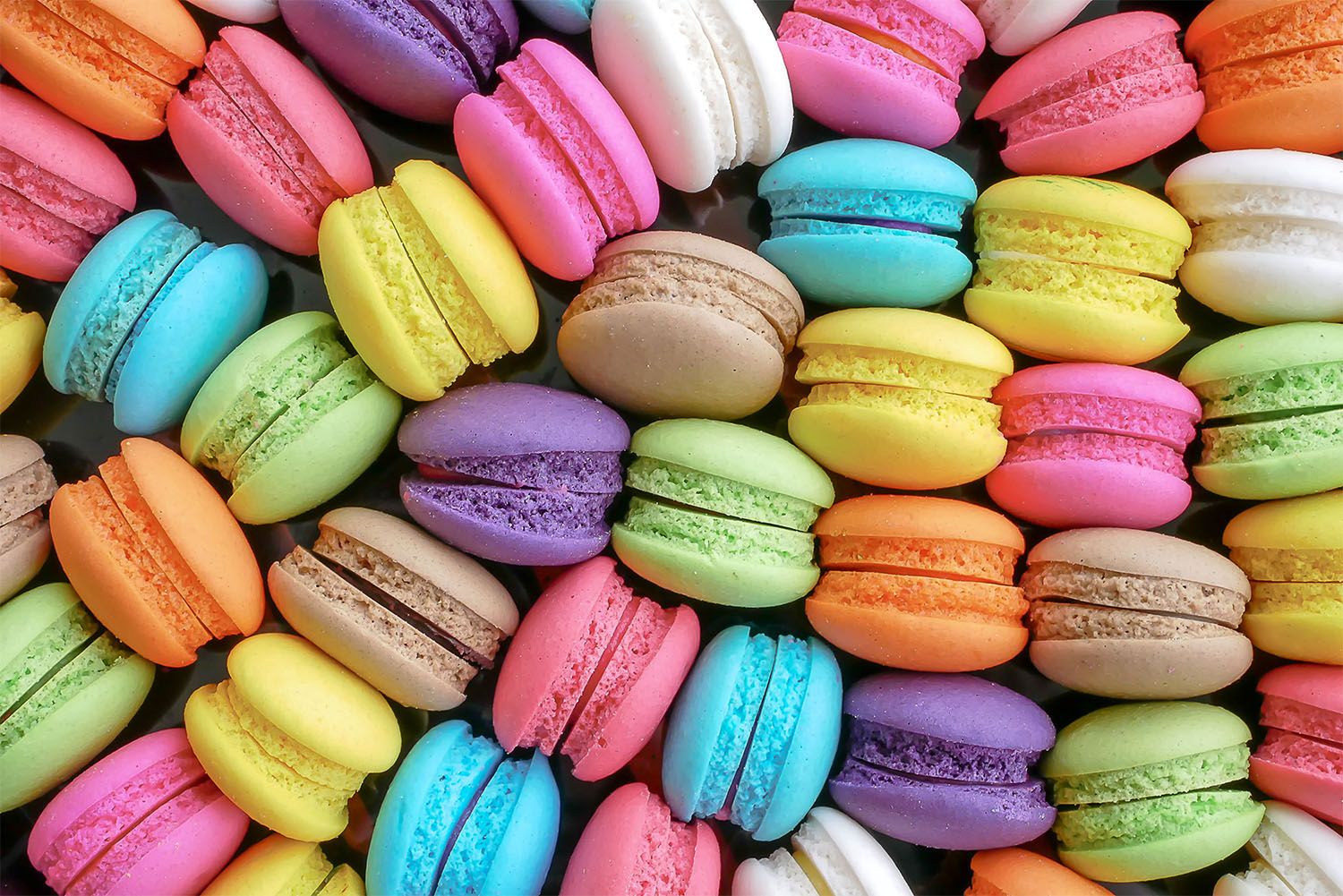French Macarons Made Easy: 5 Tips for Home Bakers

French macarons are delicate meringue-based cookie sandwiches, often filled with creamy chocolate ganache, flavored buttercream, or fruit jams. A good version features a light, smooth, and crisp outer shell with a chewy nougat-like inside. The meringue cookies should have “feet” or a slightly raised and ruffled edge, meaning they’ve baked properly.
These treats are one of the more fickle, technical confections to make at home. Whipping up a batch in dry, humid climates is a major challenge. But don’t fret! Here are some foolproof tips to guide home bakers of every level.
French Macaron Ingredients
While this list is fairly simple, they require much attention to detail. Make sure you have extra stocks on hand in case you encounter missteps.
Egg whites
Beat egg whites with sugar to make a meringue. They give macarons that signature crust and texture. Remember to separate your egg whites carefully. Even the faintest trace of yolk will prevent the meringue from forming the stiff peaks needed for a French macaron recipe.
Almond flour
Almond flour is made from blanched almonds blended or processed into a fine meal. You can find this in baking shops and specialty grocery stores.
Powdered sugar and superfine granulated sugar
Granulated sugar is mixed into egg whites to form the meringue. The texture of the sugar helps create pockets of air while whipping. Powdered sugar goes into the macaronage or the mixture of meringue and dry ingredients. Because this part of the process requires delicate folding, the powdered variety helps get the final texture right.
Food coloring
Breathe some life into your dainty little macarons by adding a touch of color to the mixture. You can use liquid or gel coloring, but the latter provides more vibrancy.
5 Tips for Making French Macarons at Home
Macarons are intimidating for several reasons. Its ingredients should be measured accurately, or you risk wasting the entire batch. Meringue-based mixtures are also climate-sensitive; they react to the humidity level in the air. Plus, there is always a high risk of overmixing. However, home bakers can achieve perfect cookies with thorough preparation. Learn how to make French macarons with ease by following these tips.
1. Use a stabilizer.
Making a meringue or a meringue-based pastry in humid weather will always be tricky. The moisture in the air can prevent egg whites from whipping into stiff peaks. Adding half a teaspoon of cream of tartar helps stabilize your mixture.
2. Keep your sugars and almond flour dry.
Dry ingredients can absorb moisture from the air when left out for too long. Planning to prepare your mise en place before baking? Wrap your dry ingredients with cling film until they are ready to use.
3. Switch on the AC or a ceiling fan.
Warm air holds more moisture than cool air. If you have an air-conditioning unit, switch it on before baking to manage humidity levels. Otherwise, a ceiling or stand fan directed at your resting macarons helps them dry better.
4. Use gel food coloring as much as possible.
Avoid adding more liquid or moisture into your mixture as much. The goal is to keep it light and airy. A small amount of gel food coloring will help you achieve this more than the liquid variety.
5. Use an oven to dry the cookies.
Most French macaron recipes require drying the cookies at room temperature for 30 minutes to form a smooth outer shell. When dealing with high humidity, this step will only make your meringue absorb more water and prevent it from rising properly. Instead, pop them into an oven set to 120°F (50°C) for 15 minutes. Bring up the temperature to 300°F (150°C) and let them bake for 12 more minutes.
How to Troubleshoot Common French Macaron Problems
It’s okay to run into a few hiccups when making macarons. It’ll take some practice to get them right. Here are common problems that happen while baking and the quick ways to troubleshoot them.
Egg whites won’t whip into stiff peaks.
The smallest amount of yolk, oil, or grease will prevent egg whites from whipping fully. Be very careful when separating your yolks. Also, wipe down your mixing bowl with tissue paper dampened with white vinegar to clean any grease from previous use.
Shells come out of the oven with cracks.
Excess air causes shells to crack. Before putting your macarons in the oven, lightly bang them on the countertop to release extra bubbles that formed while piping.
Shells stick to the pan or sheet.
Silicone mats don’t heat up as quickly because of their thicker layers. Instead, line your baking sheets with parchment paper. It’s also more moisture-wicking than silicone, letting your macarons get nice and crisp at the bottom.
Choosing Macaron Flavors
Get creative when it comes to flavors and fillings! Try different types of chocolate ganache, homemade fruit jams, silky smooth spreads, or combinations of these. Add sprinkles or chopped nuts that stick to the sides for some glam. You can also make an ice cream sandwich by tucking a small scoop of Selecta Super Thick Mango Ice Cream between the shells. Or how about a reverse mango float with a vanilla buttercream filling studded with fresh mangoes? The options are endless!
Learning to make French macarons can be both challenging and rewarding. Be patient, hone your skills, and improve your attention to detail. It’ll be well worth the effort once you bite into your crunchy, chewy cookie!
Suggested Article

Japanese Natto: A Quick Guide
